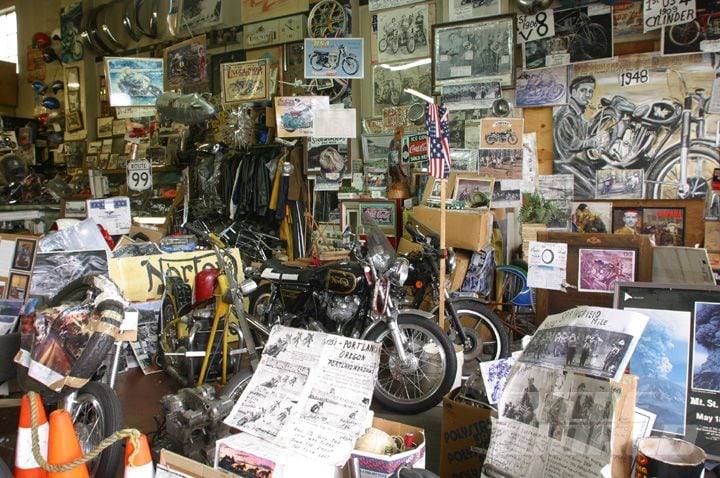Explore the Latest Motocross Gear NZ for Every Degree of Rider
Explore the Latest Motocross Gear NZ for Every Degree of Rider
Blog Article
Understanding Bike Gears: Exactly How to Enhance Your Riding Experience
In the world of motorcycling, understanding the art of gear adjustment is essential for boosting your riding performance. Appropriately understanding and utilizing bike gears can substantially influence control, acceleration, and gas effectiveness, changing an ordinary trip right into a smooth, exciting journey.
Comprehending Gear Mechanics
At the core of motorcycle characteristics, gear mechanics play a pivotal duty in transforming engine power into motion, inevitably determining speed and control. The equipment proportions, thoroughly designed, establish the partnership between engine revolutions and wheel turns, influencing acceleration and gas effectiveness.
Comprehending equipment auto mechanics begins with identifying the relevance of the gearbox, which houses numerous gears of differing sizes. These equipments engage through a procedure called meshing, where teeth of different equipments engage to send power. The precision of this communication is important; any imbalance or damage can bring about inefficient power transfer, preventing efficiency. In addition, the plan and dimension of gears affect the motorcycle's ability to manage various tons and rates.
Additionally, the concept of gear moving is integral to maximizing efficiency. Smooth and prompt shifts make sure that the engine operates within its optimal power band, avoiding unneeded strain and improving durability (motocross gear nz). By understanding these mechanical details, riders can achieve a harmonious mix of efficiency, control, and power, raising their riding experience
Timing Your Changes
Shift timing proficiency is essential for optimizing motorbike efficiency and improving the riding experience. Appropriately timed shifts ensure that the engine operates within its ideal power band, which is crucial for maintaining control, achieving smooth acceleration, and ensuring the longevity of the motorcycle. Riders must develop an user-friendly feeling of when to change equipments, which entails recognizing the partnership in between engine transformations per minute (RPM) and speed.
To master change timing, pay attention to the engine's noise and really feel, as these offer important clues about when to transform equipments. The optimal shift point typically takes place when the engine comes close to the upper array of its power band without getting to the redline. Shifting also early can cause a lack of power, while changing far too late might trigger unnecessary engine pressure
Furthermore, roadway problems and riding style impact change timing. In contrast, throughout highway riding, fewer changes at greater rates can be more suitable.
Enhancing Gas Efficiency
While grasping motorbike equipments is essential for efficiency, improving gas efficiency is similarly crucial for both financial and environmental reasons. Ideal gas intake not only minimizes operational prices but also minimizes the eco-friendly impact of riding. To achieve this, one must recognize the complex relationship between gear option and engine performance.
Firstly, picking the right gear at suitable speeds can substantially influence gas consumption. Riding in a greater equipment at reduced rates can bring about engine hauling, which is detrimental to both motocross knee guards fuel economy and engine health. Conversely, riding in lower equipments at high rates results in unneeded gas usage. Therefore, preserving an ideal balance by shifting gears abreast with roadway problems and prepared for maneuvers is necessary.
Furthermore, routine maintenance plays a pivotal duty in gas efficiency. Ensuring that the motorbike is well-tuned, with tidy air filters and effectively inflated tires, can reduce and boost aerodynamics fuel wastefulness. Embracing a riding style that welcomes progressive velocity and smooth slowdown can contribute to far better fuel economic situation.

Methods for Smooth Transitions
Accomplishing smooth equipment transitions is basic to boosting the riding experience and making sure the durability of a motorcycle's transmission system. Proper equipment moving not only adds to a smooth experience but likewise minimizes damage on the mechanical elements. To understand the art of smooth transitions, motorcyclists must concentrate on a few essential strategies.

Secondly, clutch control plays a critical function. Involving and disengaging the clutch efficiently calls for technique. The clutch bar need to be launched gradually, permitting a smooth transfer of power from the engine to the wheels without creating a jolt or sudden activity.

Adapting to Roadway Problems
Browsing varied roadway problems is an essential ability for any type of motorcyclist aiming to maintain control and safety. Whether you're riding on damp surface areas, crushed rock roads, or browsing doglegs, your capacity to adapt your equipment usage and riding method is extremely important. Recognizing how to readjust your equipments properly can significantly influence grip and useful reference security, ensuring a safer journey.
In comparison, when riding on gravel or uneven terrain, reduced gears are more effective. Reduced gears offer much better control and allow you to respond even more promptly to unforeseen changes in the roadway surface.
Sharp curves require accurate equipment management to balance rate and control. Downshifting before going into a contour can help preserve energy while guaranteeing the bike remains steady throughout the turn. Regular practice in different problems enhances your capability to respond and anticipate to adjustments in roadway texture and incline.
Verdict
Understanding bike gears dramatically enhances the riding experience by enhancing control, acceleration, and fuel performance. Adjusting equipment choice to numerous roadway conditions, such as utilizing higher gears on damp surface areas and reduced gears on gravel, more improves handling and safety.
Recognizing equipment mechanics starts with identifying the significance of the gearbox, which houses multiple gears of varying sizes. These equipments engage through a process understood as meshing, where teeth of different equipments involve to transmit power (motocross gear). Mild modifications to the throttle throughout equipment changes can avoid jerky movements and preserve a consistent riding pace
Whether you're riding on damp surface areas, gravel roads, or navigating sharp turns, your capability to adapt your equipment usage and riding technique is extremely important. Adjusting gear choice to various roadway problems, such as making use of greater equipments on damp surface areas and reduced gears on gravel, further boosts handling and security.
Report this page